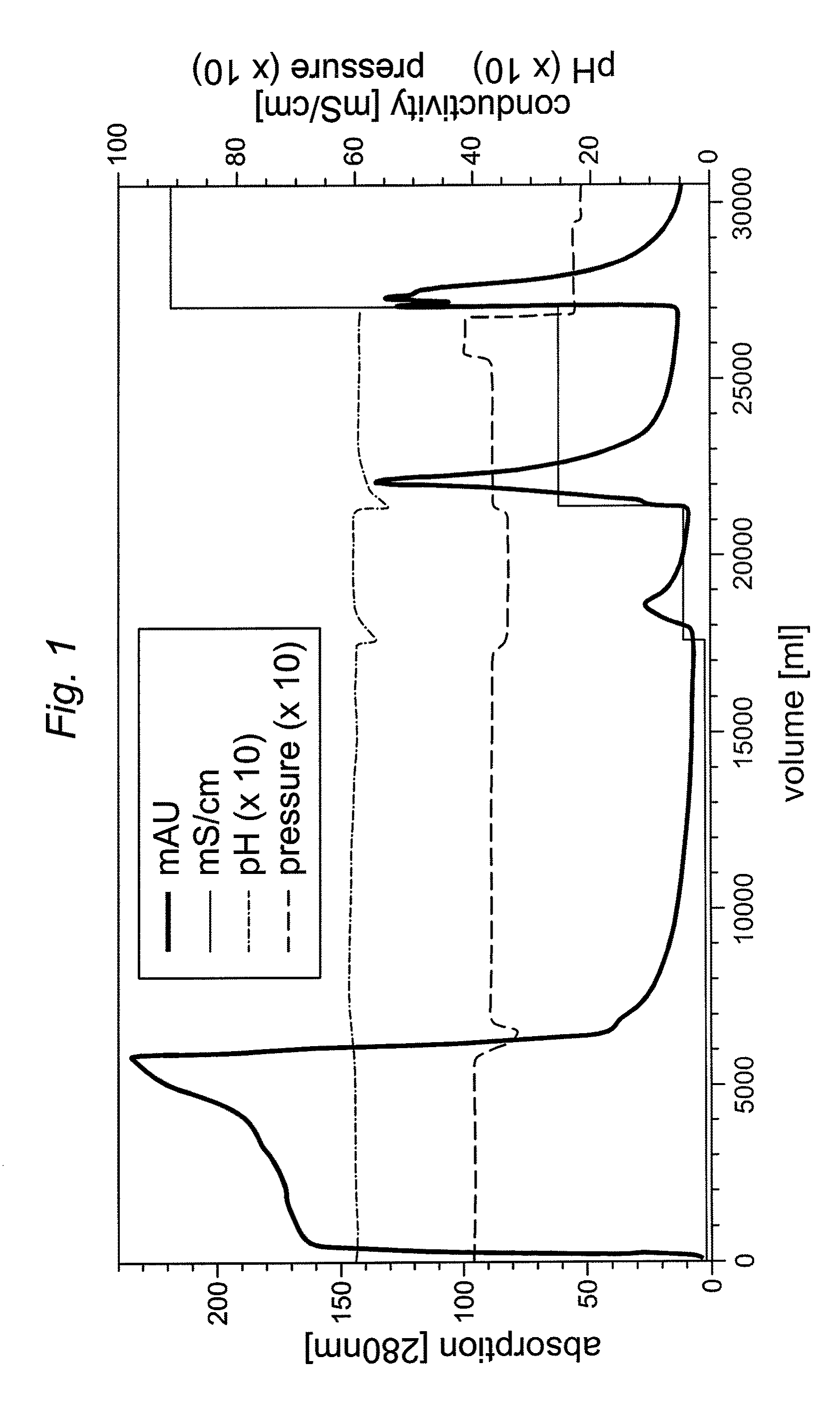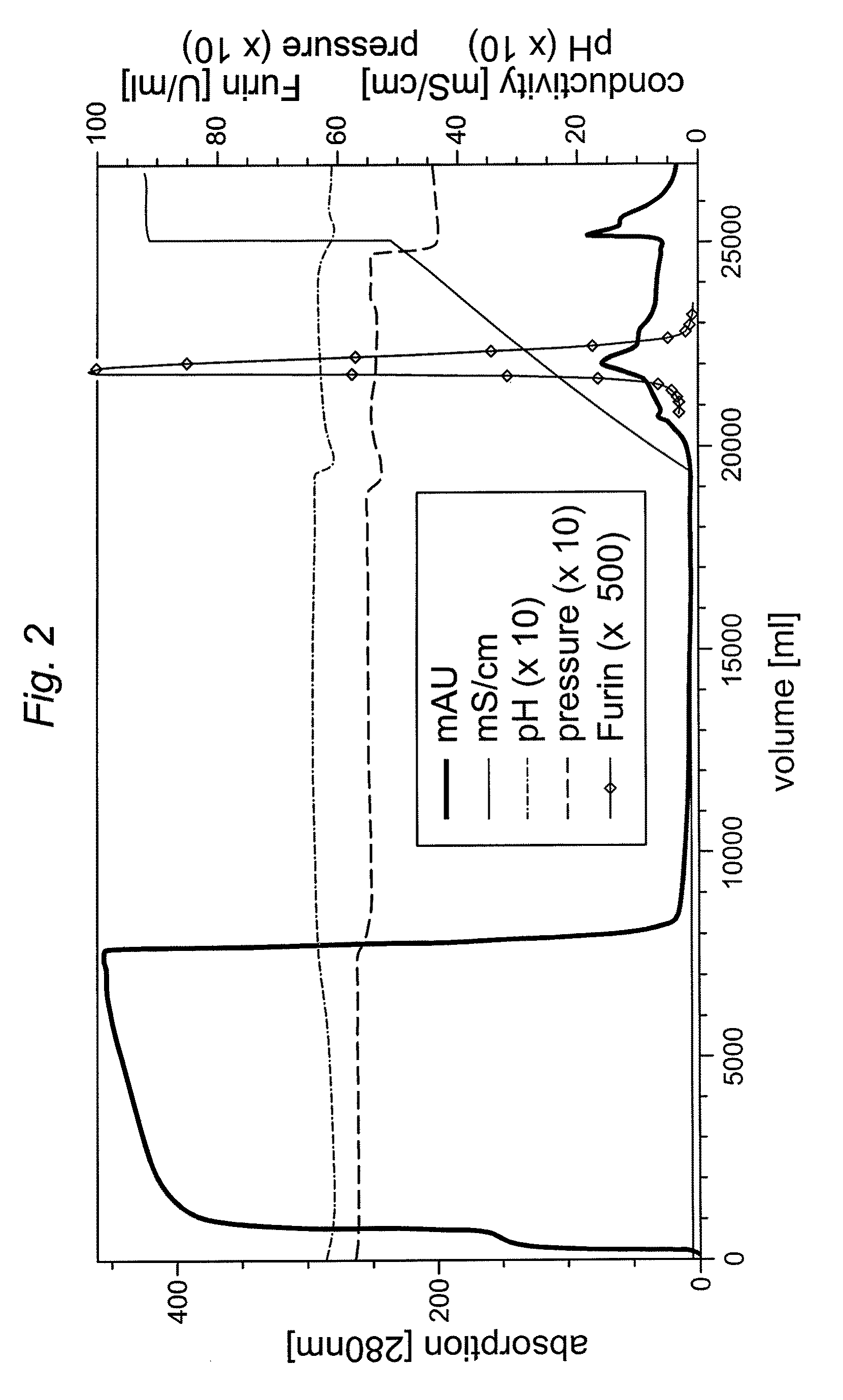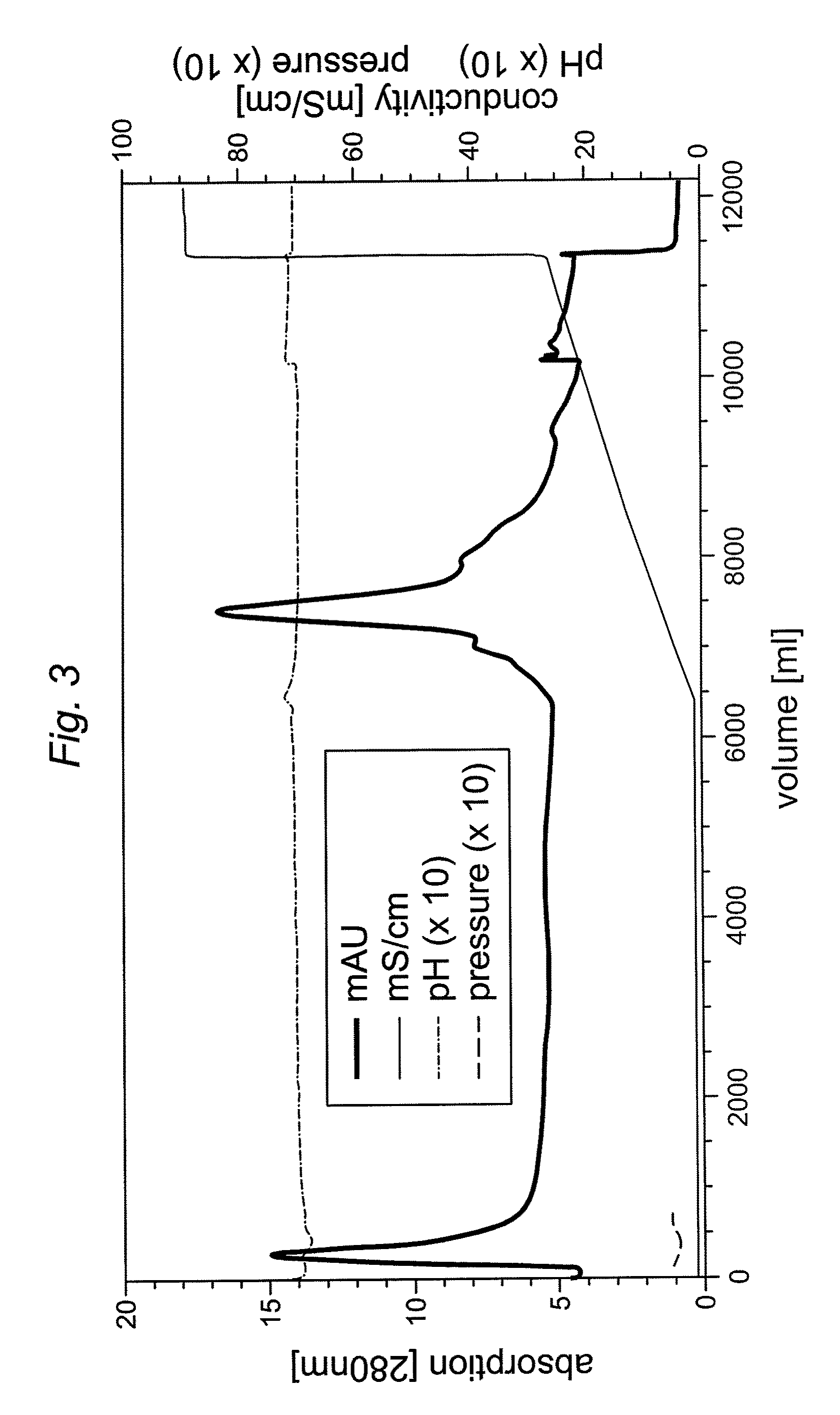Preparative purification process for human furin
a purification process and human furin technology, applied in the field of purification methods of recombinant human furin, can solve the problems of inoptimal and available purification methods of furin
- Summary
- Abstract
- Description
- Claims
- Application Information
AI Technical Summary
Benefits of technology
Problems solved by technology
Method used
Image
Examples
example 1
Expression and Analysis of Recombinant Truncated Furin
[0044]Truncated human furin lacking amino acids 578 to 794 (SEQ ID NO:1) was expressed in CHO cells which were cultured by chemostat fermentation in 80-200 L scale. A furin-containing CHO cell supernatant was concentrated approximately 50-fold (ultrafiltration unit with a 0.6 m2 Hydrosart 30 kDa membrane, Sartorius Göttingen, Germany) and diafiltrated against 50 mM Hepes, 1 mM CaCl2, pH 6.0 and stored at −20° C. and until use (within a week).
[0045]The protein content of the samples was measured according to the principle described by Bradford (Anal Biochem. 1976; 72:248-54) using the Protein Assay Dye Reagent Concentrate from Bio-Rad Laboratories (Hercules, Calif., USA). The microassay procedure was carried out according to the manufacturer's instructions and calibrated using a certified human serum preparation (Qualitrol HS—N, DiaSys Diagnostics, Holzheim, Germany), obtaining a calibration range of 20 to 1.8 μg protein / mL. Conce...
example 2
Identification of CAPTO MMC™ Resin as Single Column Purification Step
[0049]A truncated furin expressed and analyzed as described above was purified in comparison on different chromatography resins previously not used for furin or truncated furin preparation. Two anion exchange resins, i.e. FRACTOGEL® EMD TMAE 650 (Merck, Darmstadt, Germany) and CAPTO Q™ (GE Healthcare, Freiburg, Germany) and a mixed cation exchange / hydrophobic interaction gel (CAPTO MMC™) (GE Healthcare) were tested for purification and concentration potential of truncated furin derived from CHO cell supernatant. The chromatography runs were carried out with 50 mM Hepes / 1 mM CaCl2 buffer at a pH of 7.5 (FRACTOGEL® EMD TMAE 650 and CAPTO Q™) and 5.5-8.0 (CAPTO MMC™). A truncated furin column load and the conductivity was varied for the individual chromatography runs (Table 1). Bound furin was eluted using a linear 0-500 mM NaCl gradient in loading buffer within 15 CV. It should be noted that all truncated furin sampl...
example 3
Replacement of Hepes Buffer by Sodium Acetate Buffer
[0055]To reduce buffer costs (approximately 500 per 1 L column) alternative buffer systems were tested. A reduction in Hepes concentration was not possible, because it resulted in substantial break-through of truncated furin in column flow-through and wash fraction. CAPTO MMC™ columns were loaded with 5,000-30,000 U furin / mL gel and eluted using a 0-500 mM NaCl gradient in loading buffer within 15 CV.
[0056]Several buffer systems were tested and it was found that 10 mM sodium acetate could achieve at least a similar purification factor, yield and capacity as compared to 50 mM Hepes buffer. The mean of three experiments using either Hepes or sodium acetate buffer is shown in Table 3.
[0057]
TABLE 3Comparison of Hepes and Sodium Acetate BufferCHO-ProteinRecoverySpec. ActivityPurificationRemovalBuffer(%)(U / mg)(Factor)(Factor)Hepes6558,9093266Sodium9550,9512430Acetate
PUM
| Property | Measurement | Unit |
|---|---|---|
| pH | aaaaa | aaaaa |
| pH | aaaaa | aaaaa |
| pH | aaaaa | aaaaa |
Abstract
Description
Claims
Application Information
 Login to View More
Login to View More - R&D
- Intellectual Property
- Life Sciences
- Materials
- Tech Scout
- Unparalleled Data Quality
- Higher Quality Content
- 60% Fewer Hallucinations
Browse by: Latest US Patents, China's latest patents, Technical Efficacy Thesaurus, Application Domain, Technology Topic, Popular Technical Reports.
© 2025 PatSnap. All rights reserved.Legal|Privacy policy|Modern Slavery Act Transparency Statement|Sitemap|About US| Contact US: help@patsnap.com



